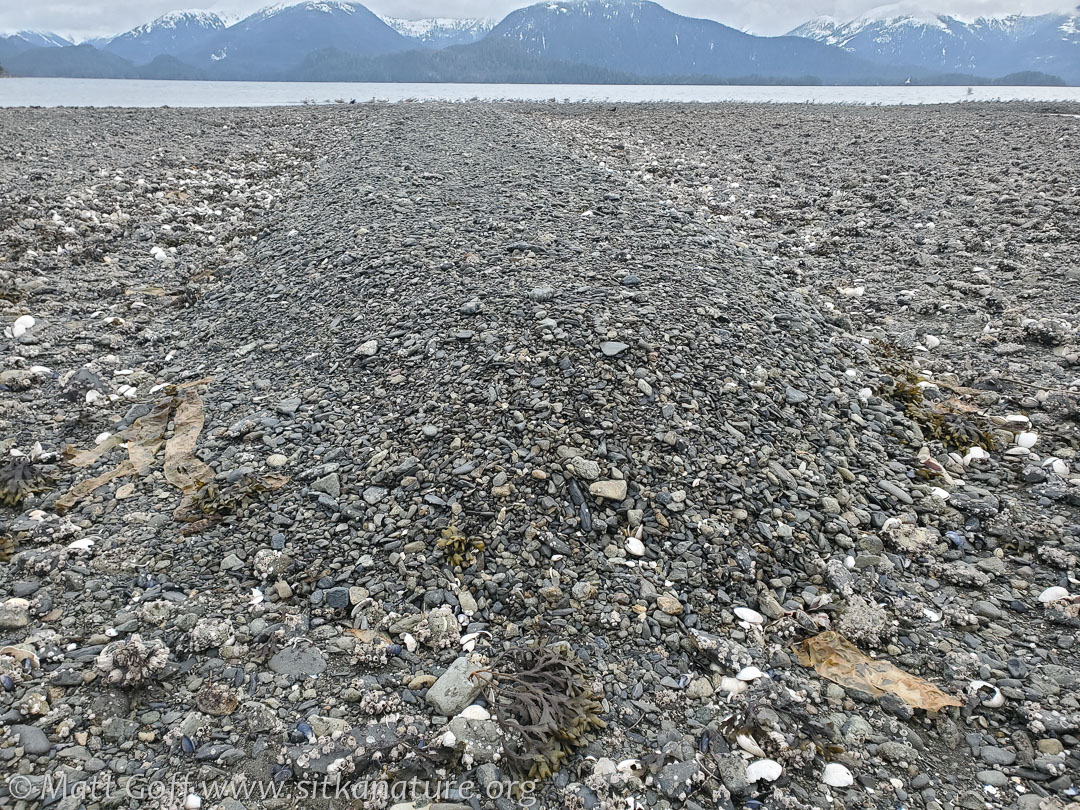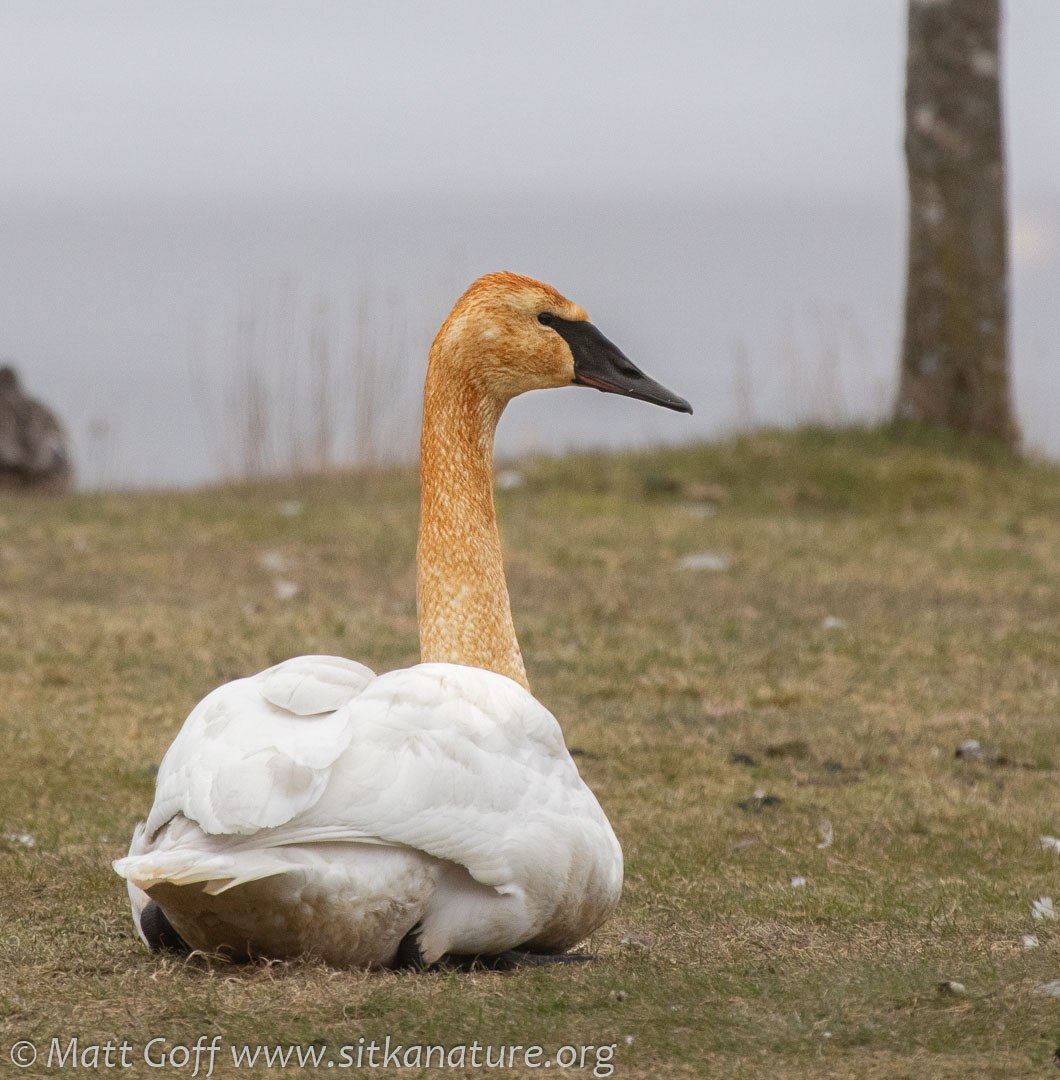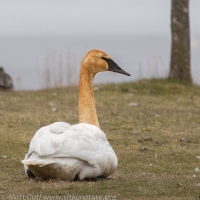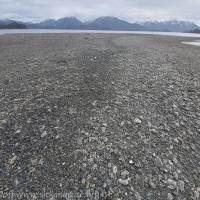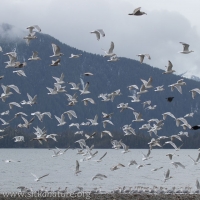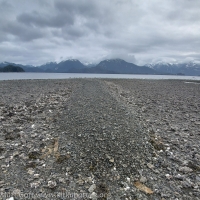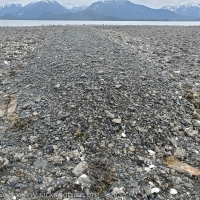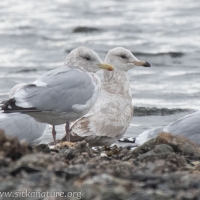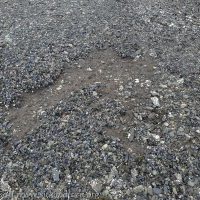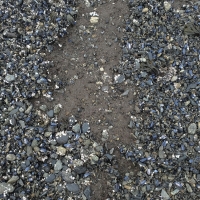With social distancing recommended, and increasingly mandated through closures and restrictions, my day-to-day life hasn’t really changed that much.
Most of my work, I do from home. The exception is teaching at UAS, but that’s only a couple of mornings per week, and last week was off for spring break. (Now it turns out this week is as well, though my first class wouldn’t have been until Wednesday.)
One of the nice things about living in a place like Sitka, is it’s relatively easy to get outside to look around and still avoid crowds (especially when it’s not tourist season – though even then, the woods are mostly empty of other humans). Even so, it seemed more subdued than usual when I went out this afternoon.
Perhaps my sense of it was more base in the strong contrast from yesterday when so many were out enjoying the sunshine. Today’s overcast skies and chilly west wind on a work day were not so inviting.
Connor reported a dark-mantled gull and saw/heard a Snow Bunting fly over while at the park this morning, so after driving over to look at long term parking (not seeing much – though I didn’t spend too long, either), I went to the park and walked out to the beach.
The tide was out pretty far, and the flock of a few hundred gulls was out near the water’s edge, as usual.
The west wind blowing across the beach wasn’t especially strong, but carried a chill that I found a little bit biting.
I did not find the dark-mantled gull, nor either of the two Glaucous Gulls he said he also saw (and was able to show Rowan).
I did renew my curiousity about some of the beach formations, though. I noticed they seemed to be associated with mussel beds. I’m uncertain whether the formation of mussel beds resulted in the raised portions, or whether the raised fostered the mussel beds. Perhaps it was a feedback loop that built things up, or a different as yet unknown factor.
There was one particular raised bed of rock that didn’t appear to be as associated with mussels. It looked like someone had taken a bunch of beach gravel, dropped a line of it about 6-7 ft wide at the base and then smoothed off the top to about 1-2 ft high. It looked fresh (not much growing on the rocks), but unless a barge dumped a bunch of rock at high tide, I’m at a loss to explain it.
While out, I went by Swan Lake and saw several of the over-wintering swans were there. The ones at the park and Starrigavan earlier in the year seem to have moved on.
A couple of the swans had very rusty colored heads – no doubt staining which I suspect was due to feeding along the margins of the lake where iron fixing bacteria are common. I was a bit curious why they didn’t all have the rusty coloring – either some were finding/preferring food from elsewhere, or letting the rusty ones do the dirty work.
I spent the better part of three hours this evening reviewing mosses expected to occur in this area in the family Orthotrichaceae. Based on what I learned, it looks like I may have already documented most of the expected species, though I hadn’t realized it. Hopefully now I will have a better sense of things when I’m out looking in the field (assuming I remember what I think I learned this evening).
